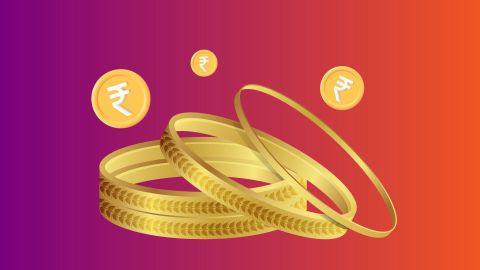Gold prices have shown significant volatility recently. At the start of July, the MCX gold rate was around ₹71,600 per 10 grams, peaking at approximately ₹74,730 by mid-month. However, post-Budget 2024, prices sharply declined, hitting a multi-month low near ₹67,400.
Despite this drop, experts believe gold prices may rise again, supported by short covering and several global and domestic factors. Key influences include rising hopes of interest rate cuts by the US Federal Reserve, a softer US dollar index, increased geopolitical tensions, and higher physical demand in domestic markets following the duty adjustments.
Given these factors, the outlook for gold prices remains dynamic, with potential for both upward and downward movements based on evolving economic conditions and market responses.
Historical trends in gold prices post-budget
Historically, gold prices in India have often shown significant movement following the announcement of the annual Union Budget. These fluctuations are typically driven by changes in policies affecting import duties, economic growth forecasts, and inflation expectations.
For instance, in recent years, the reduction of import duties on gold has generally led to a decline in prices. This is because lower duties make gold more affordable, thereby increasing its accessibility to consumers. Conversely, when the government has increased duties to curb imports and address the current account deficit, gold prices have tended to rise, reflecting the higher cost of bringing gold into the country.
Additionally, budget announcements that influence the overall economic outlook, such as infrastructure spending and fiscal deficit targets, also impact gold prices. A positive economic forecast tends to strengthen the rupee, which can lead to lower gold prices in the domestic market. In contrast, concerns over economic stability or inflation can drive investors towards gold as a safe-haven asset, pushing prices higher.
In the 2024 Budget, the government announced a reduction in customs duties on gold, leading to a significant decline in prices. This drop reflects the immediate market response to the duty adjustments and highlights the sensitivity of gold prices to fiscal policy changes. Overall, the post-budget period is a crucial time for the gold market with prices reacting swiftly to fiscal measures and economic reforms.
Factors influencing gold prices after the budget
The factors influencing gold prices after the budget include:
- Import duties: Changes in import duties directly affect the cost of gold. Lower duties typically reduce prices by making gold more affordable, while higher duties increase prices by raising import costs.
- Economic outlook: Budget announcements that impact economic growth projections can influence gold prices. Positive economic forecasts often strengthen the rupee, potentially lowering gold prices, while economic concerns may drive demand for gold as a safe-haven asset, increasing prices.
- Inflation expectations: Measures in the budget aimed at controlling inflation can affect gold prices. Higher inflation expectations usually lead to increased demand for gold, pushing prices up, as gold is seen as a hedge against inflation.
- Rupee value: The strength of the rupee against the US dollar can impact gold prices. A stronger rupee generally leads to lower gold prices in the domestic market, while a weaker rupee makes gold more expensive.
- Global economic factors: The budget can influence investor sentiment towards global economic conditions. Factors such as interest rate expectations, geopolitical tensions, and global economic stability play a role in determining gold prices post-budget.
- Domestic demand: Budget measures that impact disposable income and consumer spending can influence gold demand. Increased consumer confidence and higher disposable income often lead to greater demand for gold, affecting prices.
- Government policies: Specific policies introduced in the budget, such as incentives for gold-related investments or measures to curb smuggling, can have a significant impact on gold prices.
These factors collectively shape the trends in gold prices following the budget, reflecting the complex interplay between fiscal policies, economic indicators, and market dynamics.
Reduced customs duty and its impact on gold prices.
The reduction in customs duty on gold, as announced in India's Budget 2024, has significantly impacted gold prices. By lowering the duty, the government aimed to make gold more affordable for consumers, which generally led to a decline in gold prices. This move is expected to stimulate demand for gold in the domestic market.
Increased affordability boosts retail demand, particularly during festive seasons and wedding periods when gold purchases are traditionally high. Overall, the reduction in customs duty on gold is likely to enhance market liquidity, encourage legitimate trade, and support the jewellery sector. This policy change ultimately benefits consumers with better prices and more competitive offerings.
Expert predictions will gold prices fall?
Experts predict that gold prices may face downward pressure in the coming months due to various economic factors. As inflation concerns ease and interest rates remain steady, the demand for gold as a safe-haven asset may diminish, leading to a potential decline in prices. Analysts suggest that a stronger US dollar and stabilising economic conditions globally could further contribute to this trend.
In the short term, price fluctuations may occur, influenced by geopolitical developments and market sentiment. Analysts believe that gold prices may drop moderately as the market adjusts to these external factors. Over the next few months, prices are expected to hover around lower averages, reflecting the cautious outlook of investors.
Overall, while some fluctuations are anticipated, the prevailing sentiment among experts leans towards a gradual decline in gold prices. Investors should remain vigilant and consider these predictions when making decisions about gold investments.
Predictions for gold price trends in the coming quarters of 2024 in India?
Experts had predicted that in 2024, gold prices in India will cross ₹70,000 per 10 grams, which it did. On 31 December 2023, the price of 10 grams of 22-carat gold was ₹58,550, while 24-carat gold was trading at ₹63,870.
According to Gnanasekar Thiagarajan, Director of Commtrendz Research, gold prices are expected to rise further, potentially crossing $2,400 in 2024. If the rupee remains stable, domestic gold prices could again cross ₹70,000. In the current quarter, gold price trends suggest continued volatility, driven by global economic conditions and domestic economic reforms.
Additionally, unexpected geopolitical activities could also play a major role in deciding gold prices.
Potential Impact on Gold Loans and Investments
The gold prices have a significant impact on gold loans and investments in India.
The following points outline these potential effects:
- Increased loan value: As gold prices rise, the value of gold as collateral for loans will also increase, making gold loans more attractive to borrowers. Financial institutions may offer higher loan amounts against gold, benefiting individuals seeking immediate liquidity without selling their assets.
- Increased demand for gold investments: Higher gold prices may lead investors to view gold as a safe-haven asset, prompting a surge in gold investments. This increased demand could result in more purchases of gold in various forms, such as jewellery, coins, or bars, as individuals seek to hedge against inflation and economic uncertainty.
- Impact on retail jewellery sales: The high price of gold may deter some retail buyers, particularly in the jewellery sector, potentially affecting overall sales. Retailers may need to adapt their strategies to attract consumers in a high-price environment.
- Market volatility: Fluctuations in the rupee and global economic conditions can create volatility in gold investments. Investors should be aware of these factors and monitor market trends closely.
- Strategic assessment for investors: With the potential for both opportunities and risks associated with gold investments, potential investors should carefully evaluate their strategies.
Understanding market dynamics and making informed decisions will be crucial in navigating the gold investment landscape in 2024.
How falling gold prices affect the gold loan market.
Falling gold prices can significantly impact the gold loan market in India, influencing both lenders and borrowers. When gold prices decline, the value of gold as collateral for loans decreases, which can lead to reduced loan amounts offered by financial institutions. Borrowers may find themselves facing higher loan-to-value ratios, which could make it more difficult to secure the desired funds.
As gold prices drop, borrowers may also become apprehensive about taking out loans, fearing that the value of their collateral may continue to decrease. This uncertainty can lead to a decline in demand for gold loans, as individuals may choose to hold onto their gold assets rather than leverage them for immediate liquidity.
On the lender's side, falling gold prices can increase the risk of defaults, as the collateral may not cover the outstanding loan amount in the event of non-payment. Consequently, lenders may tighten their lending criteria or increase interest rates to mitigate this risk, further discouraging potential borrowers.
Overall, a decline in gold prices creates a challenging environment for the gold loan market, with implications for both borrowers and lenders that could result in reduced activity and heightened caution in lending practices.
Investment strategies in a declining gold market.
Navigating a declining gold market requires a thoughtful approach to investment strategies. The following pointers can help investors make informed decisions during such periods:
- Diversify investments: Instead of solely focusing on gold, consider diversifying your portfolio with other assets like equities, bonds, or real estate. This strategy can mitigate risks and reduce the overall impact of declining gold prices on your investments.
- Explore alternative assets: Look into alternative assets such as silver, platinum, or precious gemstones, which may perform better in a declining gold market. These alternatives can provide opportunities for growth and help balance your investment portfolio.
- Invest in gold-related stocks: Consider investing in gold mining companies or ETFs (exchange-traded funds) that focus on gold-related businesses. These investments can potentially benefit from market fluctuations while providing exposure to the gold sector without direct ownership of the metal.
- Adopt a long-term perspective: If you believe in the long-term value of gold, consider holding your investments despite short-term declines. Historically, gold has been viewed as a hedge against inflation and economic uncertainty, and long-term investors may benefit from eventual price recoveries.
- Stay informed: Keep abreast of market trends, economic indicators, and geopolitical developments that can influence gold prices. Being well-informed can help you make timely decisions about when to buy, sell, or hold your gold investments.
By implementing these strategies, you can navigate a declining gold market more effectively and position yourself for potential opportunities when conditions improve.
In conclusion, the recent budget announcements have significantly influenced gold prices, creating both challenges and opportunities for investors. With the reduction in customs duties and changing market dynamics, gold is likely to experience increased volatility. For those looking to navigate this environment, considering gold loans can be a strategic move.
Bajaj Finserv Gold Loan provides a convenient way to leverage gold jewellery, offering quick access to funds while allowing investors to retain ownership of their gold, even amidst fluctuating prices. The low
gold loan interest rate and easy to meet
gold loan eligibility criteria, makes this loan a wise financial option.






